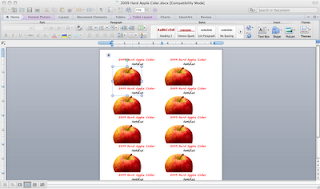 |
| My 2010 expenses. The top 20% of categories have 67% of expenses. |
This year I downloaded 850 transactions from Mint into Excel, and sorted through them. It is good practice using pivot tables.
I spend too much on cable TV and eating out. Although it feels like my DW's indulgences in organic foods are expensive -- grocery spending is not going up.
The mortgage is the biggest expense, then groceries and other household stuff, house repairs, and so on. Taxes would be the biggest of all, but I ignore them. The budget buster this year was the new furniture we bought.
My budget is a legacy of my grad student years when we tracked everything, so we could afford food and toys for the kids both. This system was pretty detailed.
When I came out of grad school, the budget helped us figure out how big a car payment we could afford, and later I used it to help find money for college expenses. These systems got looser and looser.
I used to use Borland Quattro, which was a spreadsheet program. Later I switched to Excel -- then off to Quicken, then Quicken Online and now Mint. Recall that Quicken bought Mint in 2009, and promised millions of users an automated conversion path to Mint. Quicken never delivered on that, instead they just told me and thousands of others to reapply. It was easy to switch though. Took an hour or less.
Budgets are so easy with Mint.com -- at least at the level of detail that I am comfortable with. I know some people track down to the last nickel, and I don't do that. My budgets are trying to get the big stuff, and try to make the little stuff average out correctly over time.
Mint.com can't be as secure as PC or Mac based software, but it sure is easier to use. Far far better than Quicken for Mac's offering.
On the other hand, these programs create canned budgets don't answer the questions I want answered, and I can organize it myself in Excel better. That is why I download everything, and replot it myself. I can also compare this year with the last few years, and that is really useful. For example that is how I know that groceries cost less than last year despite the organic yogurt in the 'frig.
After I look at expenses, I want to look at savings -- so digging into the 401k is next.




















































